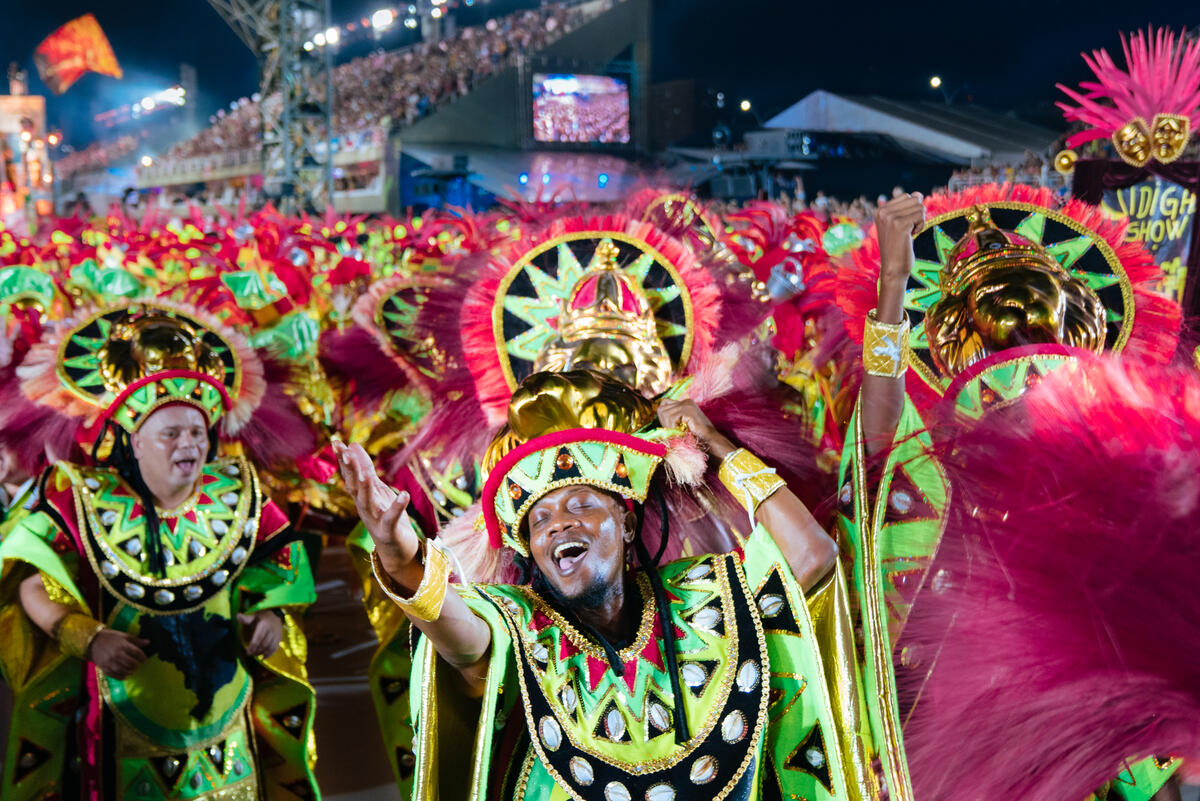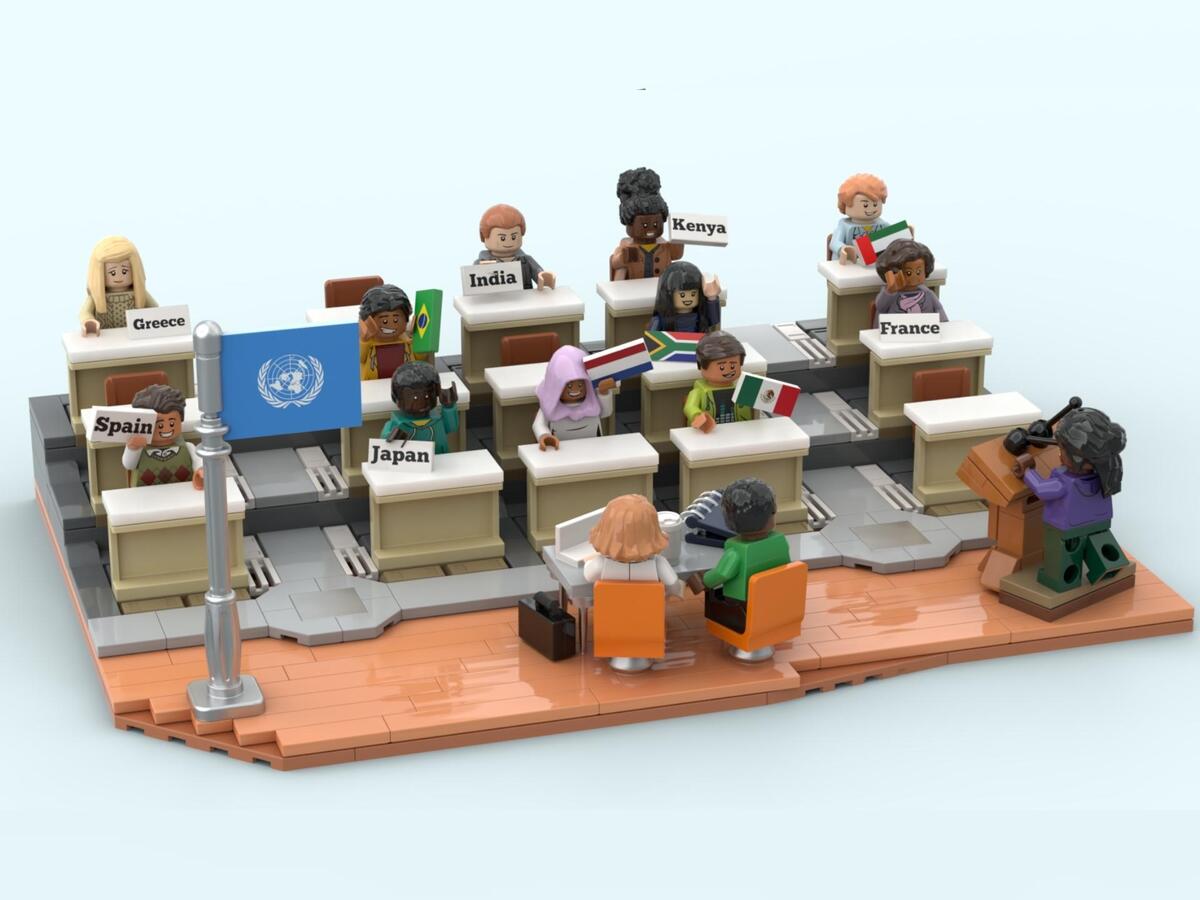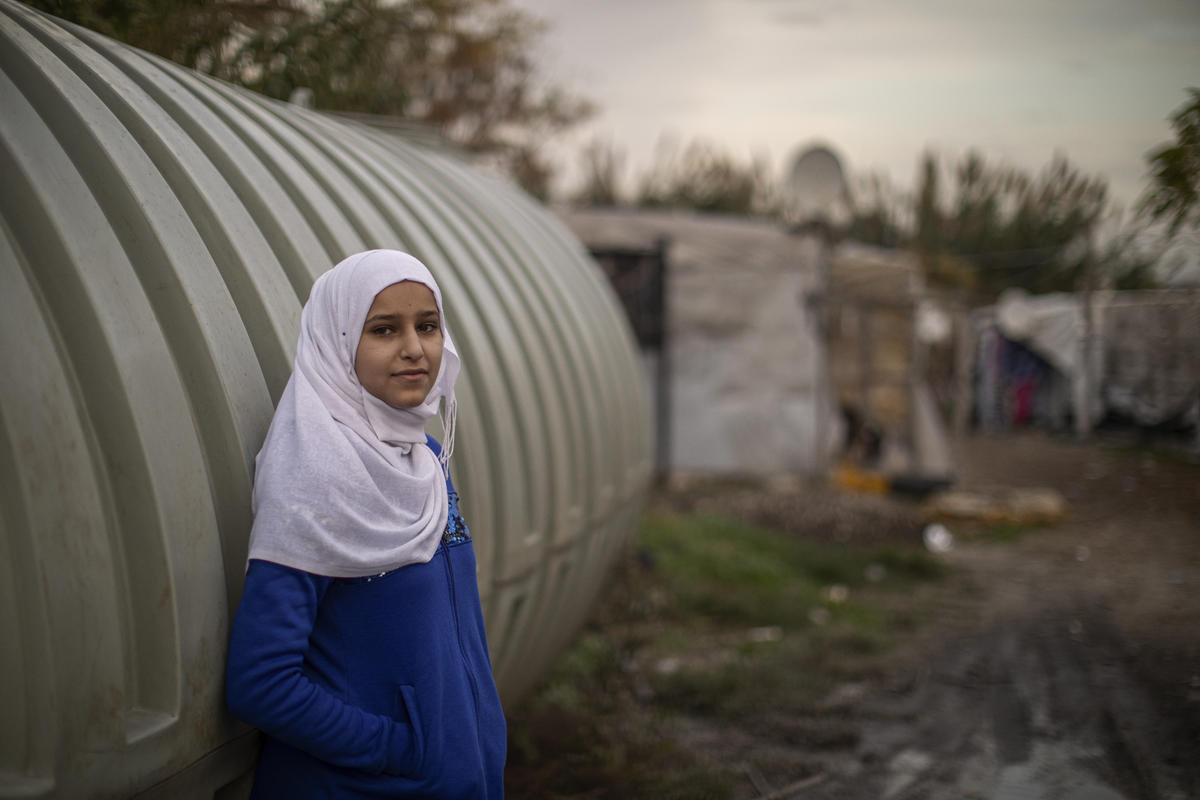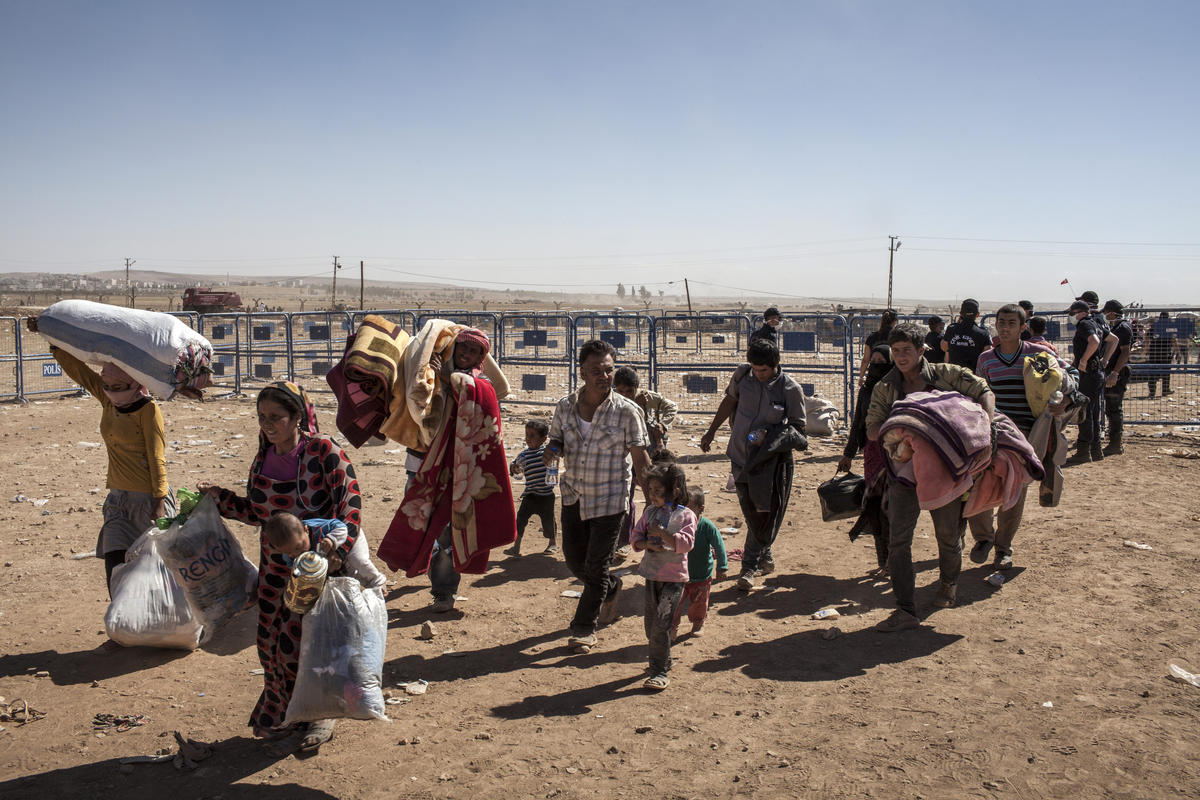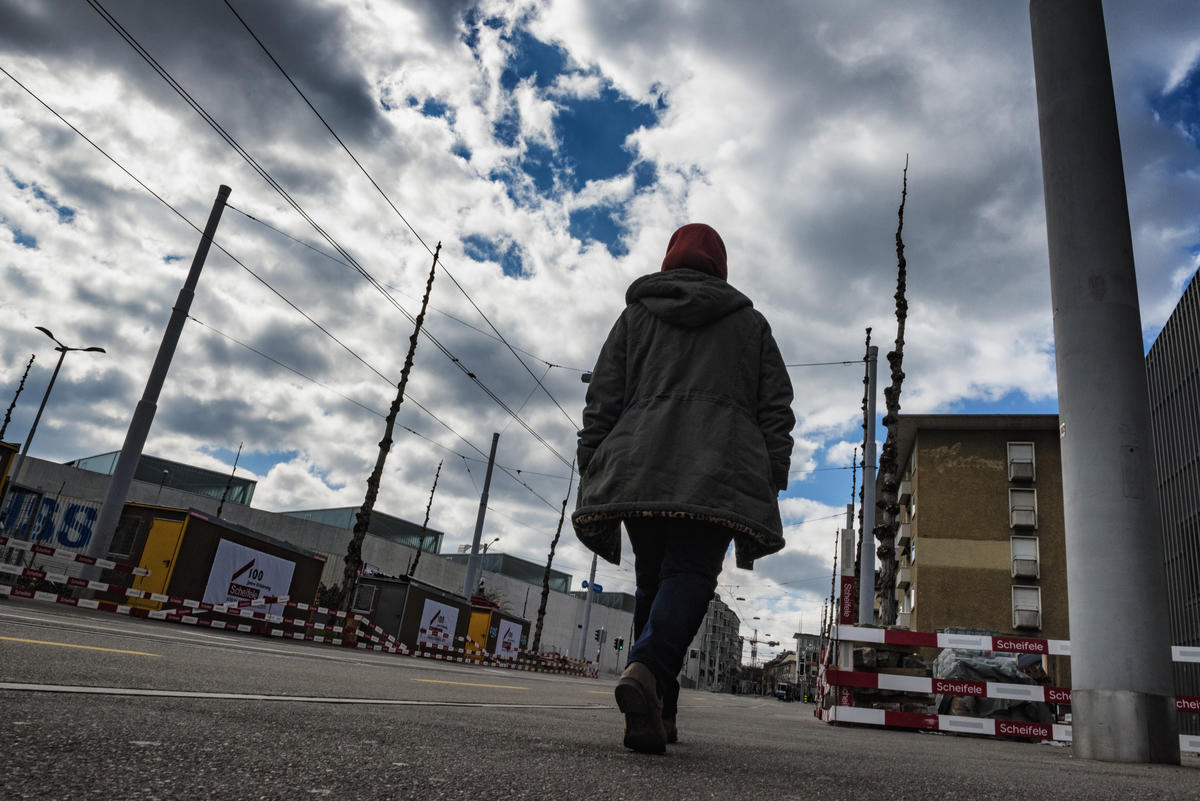New support for refugees also helps hosts – World Bank official
New support for refugees also helps hosts – World Bank official

Xavier Devictor is the Advisor for the Fragility, Conflict and Violence Group at the World BankLink is external and leads the Bank’s work on forced displacementLink is external as a development challenge.
In the lead-up to the adoption of a new global compact on refugees, calling for a fairer sharing of responsibility in the response to refugee movements, he explains the new support available for countries hosting large numbers of refugees.
What is behind the World Bank’s increased engagement in the response to refugee situations?
Our mandate is about poverty reduction and promoting shared prosperity. From our perspective, refugees, IDPs (internally displaced people) and people living in host communities tend to be poor or vulnerable. Supporting them is a central part of our mandate.
There has been tremendous progress in development across the world. Fewer people are living in extreme poverty, which now tends to be concentrated in pockets, either geographically or in specific social groups. Refugees and host communities are part of these groups.
In what ways are refugees more vulnerable than other poor people?
First, these are people who often have lost everything very quickly in terms of physical and financial assets, as well as social networks and social capital. They have undergone very traumatic ordeals and need additional support.
In addition, refugees tend to live in an uncertain environment. In a number of countries, they have very limited access to work, school or the health care system.
In most places, they also live in regions that are poorer than the national average and where there are fewer opportunities. Eighty per cent of refugees live in countries that have performed less well economically than the global average. And in these countries, about 72 per cent of refugees live in regions that are less well-off than the national average. So, they end up in a poor region of a poor country.
"People planned assuming that they would be back home next year."
Finally, because of the uncertainty about what tomorrow will bring, refugees have a very short-term planning horizon. For example, in a Human Rights Watch report a year or so ago on education for Syrians in Turkey, some parents were reported to have said their kids couldn’t access school in Arabic. They could have gone to a Turkish public school but, to do that they would have had to learn Turkish and learning Turkish would take them a year. Since they were going back to Syria soon, there was no point. Except that this was six years ago. So, people planned assuming that they would be back home next year. This has major consequences for the next generation.
This very specific type of poverty and vulnerability requires special attention.
What are the key elements of a ‘development response’ to forced displacement, and how is it different from the traditional approach?
The development response is a complement to what exists, not a substitute. It is not a new way that is going to replace the old way. It is about adding to what exists as part of a broader set of interventions by the international community.
Our support is for both refugees and host communities. We believe we can most contribute to the socio-economic dimensions of a situation – access to work, access to services and, basically, the ability to regain a degree of normalcy in your life and to have a chance at self-advancement.
The other critical aspect is to bring in some of the lessons of development, which is first and foremost about policies and institutions. Projects don’t develop countries. They are a means to an end, a way to support the adoption of good policies or the strengthening of institutions.
The World Bank recently introduced new types of finance for low and middle-income countries hosting large numbers of refugees. What kinds of problems are these new instruments designed to address?
What we’re trying to do with these new financing instruments is to address a mismatch between our country-based financing model and the fact that refugees do not live in their own countries. And we’re trying to provide additional resources over and above what would be available in normal circumstances, and under very favourable terms to the host countries.
"You no longer have to choose between refugees and non-nationals, and your own people."
If you are country A and you are entitled to receive $100 million from the World Bank, you are still going to get your $100 million, but you are going to get an extra $20 milllion or $30 million for the benefit of refugees and host communities. You no longer have to choose between refugees and non-nationals, and your own people. You can do both.
How much of the finance is grants and how much is loans?
For low-income countries, the poorest on the planet such as some countries in sub-Saharan Africa and South Asia, such as Bangladesh, we typically intervene through a part of the World Bank Group called the International Development Association (IDA). Link is external It is currently in the 18th cycle (IDA-18)Link is external and provides countries with a combination of credits and grants, depending on their macro-economic and debt situation. For most countries, the credit part is a loan over 38 years at zero per cent interest, of which you don’t repay anything in the first six years.
We now bring in money under this programme through a so-called IDA-18 Sub-Window for refugees and host communitiesLink is external which is provided in grants for those countries that were eligible for grants under the IDA, and half in grants, half in credits for countries that were eligible for credit.
This is not only money for refugees; it is also money for host communities. And we are not financing emergency assistance, but investments that will yield economic benefits to the country. Most countries find it extremely advantageous to receive assistance on these terms.
For middle-income countries, such as Lebanon and Jordan, we engage through a part of the World Bank Group called the IBRD, the International Bank for Reconstruction and DevelopmentLink is external. We borrow money from financial markets on extremely good terms, then we on-lend this money to middle-income countries, which cannot normally access such favourable conditions in financial markets. For projects that are to benefit refugees and host communities, in order to pay the interest rate on our loans, we mobilize resources from donors through the Global Concessional Finance Facility (GCFF)Link is external So, essentially, countries like Lebanon and Jordan can access these resources for a focus on refugees and host communities under very concessional terms – akin to IDA credits.
What is your message then to those states asking why they should have to take out loans to cope with hosting refugees who are an international responsibility?
A key message is that this is not money for humanitarian assistance. This is money that you can use to develop a part of your country that is underserved in terms of services and not functioning very well economically.
"The hospitals, the schools and the roads that have been built will stay."
And, think about the fact that at some point refugees will go back home, but the hospitals, the schools and the roads that have been built will stay.
The way I framed it recently with a country that was asking this question was: think about it as extra money to develop a part of your country that is in great need of development. And the only thing we are asking you, if we’re financing this hospital, is to let refugees access the hospital, which doesn’t cost you much once the hospital is built. Being able to provide additional health care for refugees is also in your national public health interests.
Think about it has having access to some external money under very favourable terms – zero per cent loans or grants - to develop a part of your country that needs it.
What are examples of good investments in refugee hosting areas that will benefit the local community, even after the refugees have gone home?
The economic impact on host communities is not homogeneous. It affects different groups in the host community differently. There is, however, one part where the impacts are clearly negative and affect everybody, and that is where there is limited supply, or supply that takes time to adjust – schools, health centres and the environment. And that’s where we believe there is a huge need for international assistance.
Again, it is not projects that change things. What will change things is if governments adopt sound policies and strengthen the institutions responsible for reinforcing these policies. Take the example of Ethiopia where we are trying to support a government programme to build special economic zones – industrial zones – to try to create jobs for Ethiopians. As part of this effort, they are also willing to provide a number of work permits to refugees. Now the industrial zones are going to stay even when the refugees move on or go back. But what we think will make the difference is both the industrial zones and the fact that people will be authorized to move out of camps and to have a job.
So, this is partly about what you can touch, like a school or health centre, but also about systems, policies, institutions like social protection systems and industrial zones where private investors can come and invest and create jobs.
The increase in development funding, thinking in the longer term and support to host communities is very welcome. But when there’s a new refugee crisis, humanitarian aid has to kick in fast. Is there a danger that this new focus on development will take attention and funds from the humanitarian work?
I don’t believe that anyone will seriously believe development financing is a substitute to emergency aid in the first months of a crisis. To me the question is a little bit different.
A report from a couple of years ago shows that 89 per cent of humanitarian assistance goes to crises that have lasted more than three years, and 66 per cent goes to crises that have lasted more than eight years. Which means that we are using an instrument – humanitarian assistance – designed to respond to emergencies to deal with situations that last over a longer period of time.
"Development assistance cannot substitute for humanitarian assistance."
I think there will probably be a rethinking of what is the right mix of intervening through humanitarian assistance versus intervening through development assistance. Having this conversation, about the right mix, under what conditions and whether it still makes sense to use humanitarian assistance in a crisis that has lasted more than eight years, is a good conversation to have. At the same time, we need to emphasize the fact that development assistance cannot substitute for humanitarian assistance; it has to complement it.
It seems logical and less expensive to let refugees earn a living rather than to give them handouts, but host countries often have their own domestic political concerns. What would be a good argument for letting refugees work or run businesses?
A model that tells people ‘you cannot work, we are going to feed you’ is tremendously expensive and, frankly, beyond what the international community can probably afford. It is also not dignifed, putting people in a position of dependency, and very counter-productive from a solutions perspective.
If you put people in a situation where, for 10 or 15 years, they cannot work, it is foolish to believe that once they get back to their own country, they are going to magically restart working. They are actually going to face the same difficulties as the long-term unemployed in OECD (Organisation for Economic Cooperation and Development) countries.
Second, the reality is that, in most situations, humanitarian assistance is not enough to feed people. People work informally. They are like you and me; they have to bring food to the table tonight. So, the question is whether you let people work illegally – because in practice that is what is going to happen – or you try to formalize that.
"People are going to be able to work at the level of their skills."
Formalizing work has at least two or three benefits. The first is that you avoid the growth of an informal economy, which in some countries also has some very unsavoury elements. The second aspect is that people are going to be able to work at the level of their skills. So, medical doctors do not have to become cab drivers, teachers may be teachers. And eventually, for those countries which have an effective taxation system, the government will be able to recover some benefits from them.
A key point in this question of work is that the impact [of refugee flows] is distributional. Some people lose, some people gain. If you prevent refugees from working legally, you push them into lower-skilled jobs in the informal sectors and you therefore define the work of the lower social economic group in the host society as the area that is going to be challenged. Whereas if you give refugees the right to work and to use their skills, the effects are going to distributed across the whole socio-economic spectrum.
Is there a link then between refugees’ ability to earn a living in exile and an eventual return?
We need to shift from language about return to language about successful return, which is in the interest of the host country because, when the host country wants people to return, it is not just to return for three months but to return forever. Everybody wants successful return.
So, what makes return successful? First are the circumstances in the country of origin, whether peace is actually holding. But there are also a lot of individual factors. Evidence shows that people who are most likely to be successful on return are people who return with some skills and some money. In other words, it’s people who have been able to work.
- For more information, download the report “Forcibly Displaced: Toward a Development Approach Supporting Refugees, the Internally Displaced, and their Hosts"Link is external, Link is externalproduced by the World Bank in partnership with UNHCR.


